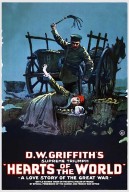By Dr Darren G. Lilleker, Associate Professor, The Media School.
There have been many positive predictions regarding the social media microblogging tool Twitter. Clay Shirky has long been an exponent of the idea that such social forms of communication will reinvigorate public debate, expanding participation in an informed and influential public sphere. Similarly, Robert Cox argues such tools allow marginalized voices and perspectives to have a public outlet.
Yet a darker side to Twitter is emerging that suggests that use of the tool can be both ill-informed, with no intention of stimulating debate and in some high profile cases for deeply disturbing forms of discourse.
While some used Twitter hashtags around the party conferences to make political comments on the promises made by the respective party leaders, reading through the #labconf feed during Ed Miliband’s speech, many seemed to be only interested in contributing the line ‘Shut up beaker’.
A comment which likened Miliband to a character from the Muppets and which targeted his own Twitter account to make it visible not only to other Twitter users but the Miliband as well. Similarly one poster repeatedly directed the message ‘F*** Off Cheesehead’ at David Cameron during his conference speech. While the politicians may well shrug this off, and the tweets themselves represent little more than some online form of graffiti, it does counter more positive predictions about the platform’s use.
More concerning is that a number of Twitter users, most notably Peter Nunn, jailed this week for 18 weeks, think it is appropriate to go one step worse than calling political leaders cheeseheads or beaker, but threatening them with rape. For no greater crime than running a campaign to have Jane Austen on the back of a UK bank note, MP Stella Creasy and feminist campaigner Caroline Criado-Perez were subjected to some of the most vile threats imaginable. The BBC refused to quote them so Criado-Perez published them on her blog instead.
Criado-Perez levels criticism at Twitter, arguing the tool is optimized for trolling. But is it practical for Twitter to self-censor? The sheer number of tweets per minute means that any form of censorship would have to be automatic. So how does a computer differentiate between the threat of rape and, a comment on rape, or revelations about rape in conflicts? Sadly it probably couldn’t. If a dictionary were to be created of words that need to be assessed independently prior to posting, there would no longer be any immediacy.
Perhaps then the only solution for Twitter is to ensure all users are identifiable, and so liable to prosecution, rather than using anonymous names and single usage email addresses when setting up their account.
There remains a punitive alternative. Tough sentences for anyone found guilty of threatening behavior, so treating this form of abuse in the same way as face-to-face threats. But perhaps also there is an educational alternative.
What makes an otherwise respectable father like Peter Nunn feel it is appropriate to threaten to rape MPs if they disagree? What makes anyone feel they can say things on social media they would be too afraid or embarrassed to say face-to-face. Perhaps there needs to be a final button asking, ‘Are you sure you want to say this publicly?’. Or perhaps more needs to be done to show how this sort of behavior is equivalent to offline behaviour. Posting on Twitter is not the same shouting at a television and drunk tweets are not only read by fellow drunks in the same way as a comment in the pub or bar might be. What seems to be required is self-awareness when using these tools in order for them to have any chance of meeting their potential in society.
While there are still those who would use Twitter without thought for themselves or others, there seems to be far weightier arguments for ignoring Twitter and the like. Perhaps avoiding them is the solution and treating it as the sort of pub you just never want to go into, the one where you are never sure if you will come out unscathed and with your sanity intact.
 Bournemouth University
Bournemouth University


